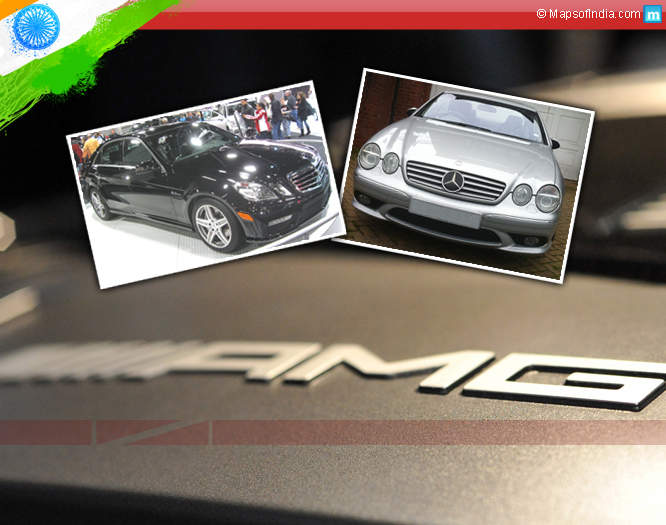Aufrecht, Melcher and Grobaspach, derived from the last names of two automotive engineers – Hans Werner Aufrecht, Erhard Melcher, and the birth town of Hans, Grobaspach – stands for the sports and racing inspired series of Mercedes Benz, called AMG. In 1967 the two fore-mentioned personifications of nothing short of genius began fine tuning engines for Mercedes-Benz race cars, setting up in an old mill.
By 1976, the setup had been moved to Affalterbach, and only the racing engine development remained at Burgstall. Melcher ceased to be partner and continued as an employee at the Burgstall location.
AMG was started as a designing and manufacturing unit for racing engines. Over time it expanded into the building of customized rod cars on the Mercedes Benz platform. From 1980 to 1985, AMG had to offer a variety of Engine performance upgrades, designer alloy wheels and other styling and custom products for Mercedes Benz cars.
Some of the popular AMG performance upgrades, which could all be individually, or collectively ordered by buyers, included greater engine displacement, performance top ends including ports and polished heads and intakes, lightweight valve trains, and more aggressive camshafts. The Dual Overhead Camshaft, 32 valve engine had also been developed and was amongst the best that Mercedes had to offer. For spoils, Mercedes also put on offer, the Getrag five speed manual transmission which had to be attained by placing a special order to AMG.
15 and 16 inch performance wheels with signature AMG five spokes, also called as “pentas” were offered along with the powertrain upgrades. Penta was UK based company that provided for the popularity driven demand for AMG wheels with replicas and slight design differences. They were neither made, nor endorsed by AMG. Genuine AMG alloys were always available not on their own but as a part of a performance suspension package that included lowered springs and revalved shock absorbers.
The AMG body kits were another popular visual upgrade, ranging from simple front spoilers and under-lips, to aggressively styled wide body kits. Recaro seats, smaller diameter racing steering wheels, instrument clusters, chrome delete options, refrigerators, gear shift knobs, stereo-systems, handmade custom interiors and upholstery and other interior wood panel packages were also made available.
In 1986, the AMG Hammer sedan was released. This was a step up in AMG’s performance modification options for midsized sedans. The Hammer was AMG’s, and the world’s fastest sedan at the time and was built by pushing the limits of a 5.6 litre V8 tuned by AMG to achieve 360 horsepower. With 32 valves and twin camshafts, it made the Hammer faster than the Lamborghini Countach on the 60-120 miles per hour line. The later model pushed the envelope further and came with the 17 inch AMG Aero1 Hammer alloy wheels. The same year, Mercedes introduced the 560 M117 engine.
Come the new millennium, and AMG directed its focus on supercharged V6 and V8 engines but was dropped by 2006, with the introduction of the naturally aspirated 6.2 litre M156 V8. It was also decided that in order to achieve higher performance outputs, the company would be employing turbocharging rather than supercharging.
In the year 2012, a statement made by the Mercedes AMG chairman made it clear that the company would not divert its focus towards diesel engines to compete with the BMW M series performance range which were all Tri-turbo diesels. Right from the beginning, the Mercedes-AMG philosophy on performance has been different from that of BMW-M, having come up with stepped up performance in a lot of its models including the flagship sedans and SUVs, where as BMW-M has laid its focus on tuning only those models which provide for a certain lateral agility, mostly their 3 series, 5 series and roadsters.
It is clear that despite their widespread sports performance focus, in comparison to BMW-M, AMG still combines the sheer brutal force of “sledgehammer” performance with the ease of handling, a certain class of comfort levels and in their words “practicality”.
AMG also shares a special relationship with brands like Aston Martin and Pagani, providing engines for the Zonda and Huayra models. The engines used in these cars are variants of the M120 with 7291 cc V12 engines that were originally used in the 1995 SL73 AMG. The M120 is the heaviest naturally aspirated engine in terms of displacement and is now used exclusively by Pagani.
During its journey, though AMG’s race driven focus may have shifted to overall performance and customization, they are redirecting to what it had originally stood for.
Thirty years later, and with a range of beautifully designed cars in all segments that pack a heavy dosage of adrenaline to anyone who dares to get behind the steering wheel, Mercedes Benz finally has a new name for their expression of exhilaration – Ah my God, better known to the rest of us, as AMG.





